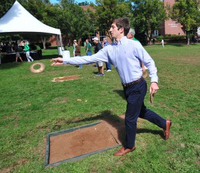
Quoits (England, Wales, Scotland, USA)
- Name of sport (game): Quoits
- Name in native language: Quoits
- Place of practice (continent, state, nation):
England, Wales, Scotland, USA
- History:
Source: https://www.historicalfolktoys.com/catcont/3012.html
The game of quoits may have evolved from ancient Greece, where athletes enjoyed throwing a discus for competition. Peter Brown, president of the National Quoits Association, believes that the Greeks passed quoits to the Romans as a weapon of war. His theory continues with the thought that the Romans brought the game to Britain. He even suggests that the origins of the game go back to the Minoan Empire circa 2000 B.C. because the boy king of Knossos evidently used quoits as a weapon on slaves if they tried to escape.
Quoits was made illegal in 1388 by Sporting Regulations, but by the 15th century, it had become a favorite organized sport in English pubs and taverns. The first official rules for the game of quoits were printed in the April, 1881, edition of The Field in northern England. The National Quoits Association was formed in 1986.
There are several different games of quoits being played in England today: The Northern Game, The Long Game, East Anglian Quoits, and Sward or Lawn Quoits. Sward Quoits is played with a clay square to which the stake or hob is set in, but it can become muddy and difficult to maintain. Many people happily adapt this game and its rules for backyard play with the hob or stake set in the grass.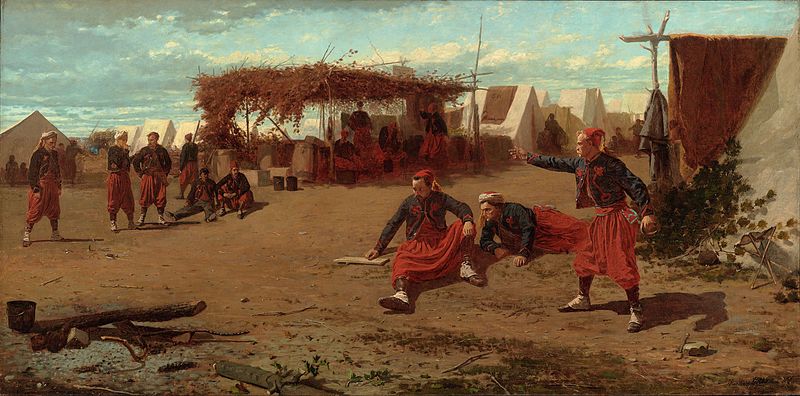 Winslow Homer, Pitching Quoits, 1865
Winslow Homer, Pitching Quoits, 1865Quoits was played during the American Revolutionary War by both British and Continental soldiers to pass the time. It has been said that the game of horseshoes was derived from quoits because some people could not afford to have quoits made, so they used what was similarly available: old horseshoes!
Miniature versions of indoor quoits were played near the Welsh-English border for at least a century. It seems that the game was invented toward the end of the 19th century, but the history of indoor quoits is not really known. A game called Rings was played in Northern England. Now, many variations of the game exist. "Deck quoits" were made from rope and used on cruise ships. "Rope quoits" is probably the same game and is popular in Australia. English and Welsh descendants in parts of Pennsylvania play the game with the hob set at a slight angle on a slate board instead of a clay bed because they resided in "the slate belt."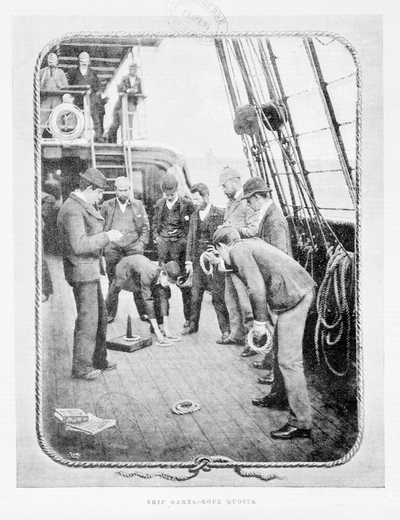 April 2, 1894, Shows group of young men playing quoits on ship deck
April 2, 1894, Shows group of young men playing quoits on ship deck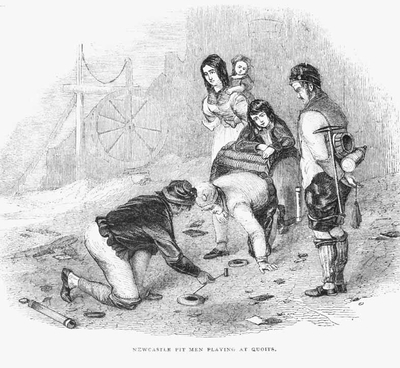 Newcastle Miners playing Quoits, printed in 1843
Newcastle Miners playing Quoits, printed in 1843 - Description:
Source: http://www.quoitsdirect.com/QuoitRules.htm
STARTING A GAME:
The quoit boards are placed 18 feet on center (from hub to hub).
One-on-one - You pitch from the same side of the boards when you travel to the opposing board. Non-diagonally. (One-on-One Positions).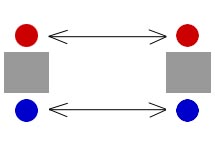 Two-on-two (a.k.a. couples or doubles) - Your partner pitches from the diagonal side of the board (Two-on-Two Positions).
Two-on-two (a.k.a. couples or doubles) - Your partner pitches from the diagonal side of the board (Two-on-Two Positions). 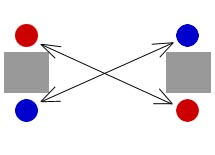 There are 4 quoits (2 for you and 2 for your partner). You can determine who throws the first pitch of the first game. After the first game the loser of the prior game makes the first pitch to start the new game.
There are 4 quoits (2 for you and 2 for your partner). You can determine who throws the first pitch of the first game. After the first game the loser of the prior game makes the first pitch to start the new game.
Pitching turns alternate with each quoit.
The pitcher's forward foot may not extend beyond the hub of his "home" board.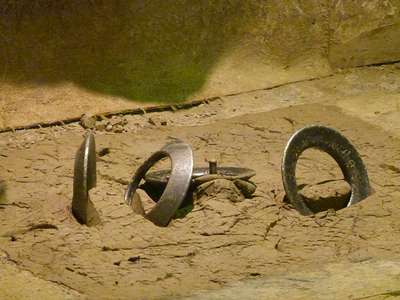
DETERMINING THE SCORE:
The first person or team to reach a score of 21 wins the game.
Every "ringer" (meaning the quoit landed on the hub) is worth 3 points.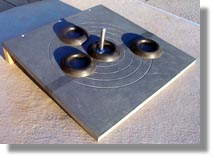 If a player should make a ringer and have his second quoit closer to the hub than his opponent, he receives 4 points (Three points for the ringer and 1 point for the quoit closest to the hub).
If a player should make a ringer and have his second quoit closer to the hub than his opponent, he receives 4 points (Three points for the ringer and 1 point for the quoit closest to the hub).
Each ringer pitched counts as 3 points, except when the same player pitches two ringers, one directly on top of the other. This player is then awarded 3 additional points, for a total of 6 points.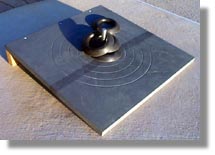 When the first player pitches a ringer which is topped by an opponent, it is the opponent only who receives 3 points.
When the first player pitches a ringer which is topped by an opponent, it is the opponent only who receives 3 points. 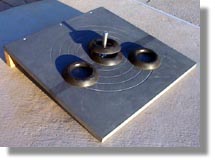 When the first player pitches a ringer which is topped by an opponent and then topped by the first player again, the last ringer made by the first player counts as 3 points for the first player. As a premium, when four ringers are made, the player pitching the last ringer wins the game.
When the first player pitches a ringer which is topped by an opponent and then topped by the first player again, the last ringer made by the first player counts as 3 points for the first player. As a premium, when four ringers are made, the player pitching the last ringer wins the game.
Every "leaner" (meaning the quoit is leaning against or on top of the hub, but not a ringer) is worth 1 point.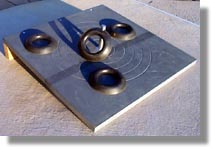 If there are no ringers and leaners the person who throws the closest quoit gets one point. If the same person's second quoit is the next closest he/she gets two points.
If there are no ringers and leaners the person who throws the closest quoit gets one point. If the same person's second quoit is the next closest he/she gets two points.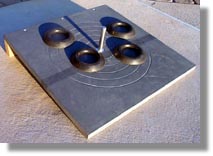 The rings on the board are used to determine the closest quoit. If you can not determine the closest quoit from the front side (closest side of the quoit to the hub) you can usually determine it by comparing the backside (the side of the quoits furthest from the hub) to the outer rings.
The rings on the board are used to determine the closest quoit. If you can not determine the closest quoit from the front side (closest side of the quoit to the hub) you can usually determine it by comparing the backside (the side of the quoits furthest from the hub) to the outer rings.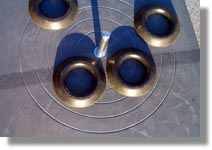 If a quoit is touching the ground, or has touched the ground, it is a "dead quoit". Remove it from the board before the next pitch. If you don't remove it any quoits that touch a dead quoit are also dead.
If a quoit is touching the ground, or has touched the ground, it is a "dead quoit". Remove it from the board before the next pitch. If you don't remove it any quoits that touch a dead quoit are also dead. 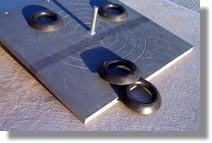 A quoit can be hanging off the side of the board. As long as it has not touched the ground the quoit is still good.
A quoit can be hanging off the side of the board. As long as it has not touched the ground the quoit is still good. 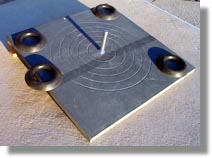 This is called the daylight rule because you can see "daylight" through the quoit since it is hanging off of the board. This rule is sometimes disputed so decide if you want to play "Daylight Counts" before you start playing against your opponent.
This is called the daylight rule because you can see "daylight" through the quoit since it is hanging off of the board. This rule is sometimes disputed so decide if you want to play "Daylight Counts" before you start playing against your opponent.
Interference due to a wandering dog or small child (which sometimes happens) is grounds for a "re-throw" (a.k.a. do-over) if the quoit is deflected during release or in mid-air.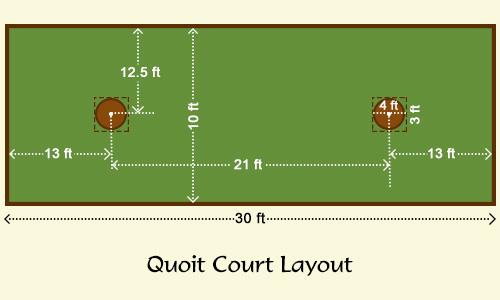
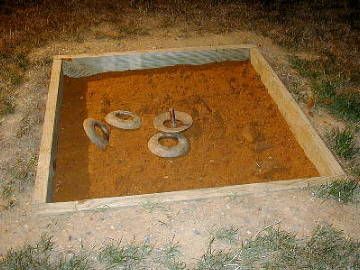
Source: https://www.tradgames.org.uk/games/Quoits.htm
The Northern Game
The Association of Amateur Quoits Clubs for the North of England was the name give to the official body that laid down the 15 rules that were published in "The Field" in 1881. This set of rules constituted what is now called The Northern Game and it has remained largely unchanged ever since. Although the Northern Game has lost some of it's popularity, it is still played seriously and enthusiastically in the North of England under the auspices of The National Quoits Association which was formed in 1986 and is undergoing something of a resurgence of late.The Long Game
Quoits however, is a split sport, much like the game of Rugby, because independently, Wales and Scotland have long been playing a distinctly different game with a similar proud history. In fact, "The Long Game" or "The Old Game" is also played in parts of England, notably East Anglia and Liverpool , but is far more rare in that country as the new century begins.
In the Northern game, if more than one quoit lands on the hob, then only the top quoit scores whereas in the Long Game, the scoring is simply that a player scores a point for each quoit nearer to the pin than his opponent. The reason for this is that the pin in the Long Game is knocked down flush with the clay surface so encircling the pin is not really a significant part of the game. The Long Game then is more akin to Bowls in play with the pin acting as a simple target. However, this simplicity belies the difficulty of the game which, in common with many celtic sports, is a test of strength as much as skill. The hobs are 18 yards apart, fully 7 yards greater than the Northern Game while the quoits are typically around 9 inches in diameter and weigh up to 11 pounds, almost double that of the Northern game.East Anglian Quoits
The long game is still played in England at the turn of the century but in a modified form that sees the quoits reduced in size and somewhat different rules being adopted. The English stopped fielding a side at the internationals some time ago presumably because the differences between the two variations had grown two large and the gap could not be easily bridged. The East Anglian game is unique in that ringers score a clean two points regardless of the opponent's efforts and are immediately removed prior to the next throw. Quoits on their backs and quoits that land inclined in a backwards direction are discounted and also removed immediately. The quoits tend to be smaller than those used in the Scottish and Welsh games but the distance is maintained at 18 yards.Sward or Lawn Quoits
The difficulty of maintaining the clay squares and the muddiness that can occur on a wet day makes genuine traditional quoits a rare sport. However, all is not lost because for many decades people have been playing a more simple version by simply putting 2 stakes in a lawn. Organisers of fetes, horse fairs and similar public functions sometimes set up temporary quoits pitches in this way and such games are often referred to as Sward Quoits. Sward Quoits has it's own varying complexities depending upon the type of ground being played upon and the height of the hobs and so forth. People wishing to play quoits in their back gardens or any open space happily emulate Sward Quoits in the same way.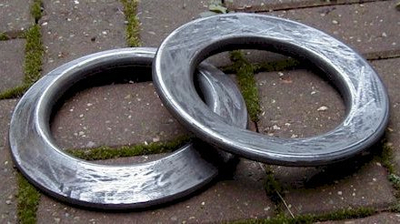
- Current status:
Practiced.
Source: https://www.tradgames.org.uk/games/Quoits.htmA traditional miniaturised version of Indoor Quoits has existed around the Welsh/English border for at least a century and a game called Rings was popular in the North in the 1930s.
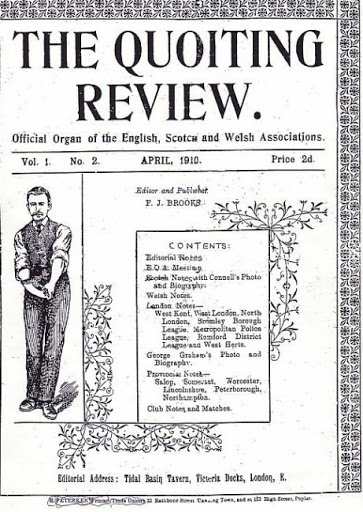 While all the above traditional English games survive to the modern day, many modern variants can be found using either home-made equipment or interpretations from modern manufacturers. Deck Quoits played with quoits made from rope has been a popular pastime on cruise ships for decades. Rope Quoits, which is presumably the same game, has recently become a trendy outdoor activity, especially in Australia.
While all the above traditional English games survive to the modern day, many modern variants can be found using either home-made equipment or interpretations from modern manufacturers. Deck Quoits played with quoits made from rope has been a popular pastime on cruise ships for decades. Rope Quoits, which is presumably the same game, has recently become a trendy outdoor activity, especially in Australia.The USA has a burgeoning Quoits community around New Jersey although the distance they put between the quoits seems to be much reduced at 21 feet (7 yards). Another derivative seems to have become popular around Pennsylvania where the hobs are set 6 yards apart on slightly angled slate boards instead of clay beds. The heart of this game is an area called, for obvious reasons, "the slate belt", populated by people of primarily English and Welsh descent. Pennsylvania also has some clay bed pitches.
Canada, too, has enjoyed a surge of Quoits interest throughout the 1990's that seems to be centred around Nova Scotia and Ontario. The sport is also played in Colombia under the name Tejo.
Current leagues Traditional quoits:
United Kingdom
Allen Valley Quoits League, Northumberland
Danby Invitation Quoits League, North Yorkshire
Lower Dales Quoits League, North Yorkshire
North Yorkshire Moors League, North Yorkshire
Montgomeryshire County Quoits League, Montgomeryshire
Mount Bures (Essex) Quoits Team
Bures, (Suffolk) Quoits TeamUnited States
United States Quoiting Association (USQA)
Mercer County Church Steel Quoit League, New Jersey
Pottstown German Club 3lb League, Pottstown Pa
Slate Belt Men's Quoit League, Bangor PA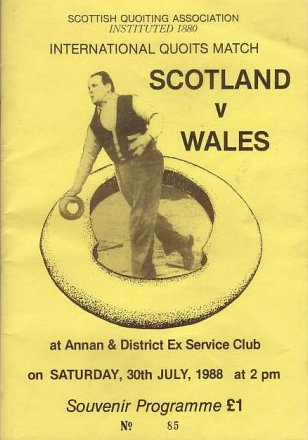
- Contacts:
The United States Quoiting Association
Webside: https://www.usqa.org/
Fb: https://www.facebook.com/quoitinamerica/
YouTube: https://www.youtube.com/channel/UCKrz0jcU-GPA0JG90ixUuUg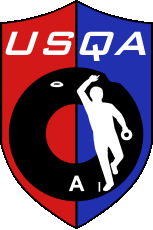
The Lower Dales Quoits League
Webside: http://www.lowerdalesquoits.co.uk/Bures Quoit League
Webside: http://www.bures-online.co.uk/Quoits/quoits.htmMercer County Church Steel Quoit League
Webside: http://mccsql.tripod.com/Zetland Quoits League
Fb: https://www.facebook.com/Zetlandquoits - Sources of information :
Articles:
https://www.tradgames.org.uk/games/Quoits.htmVideo:
https://www.youtube.com/watch?v=4uaw5sm-xN4
https://www.youtube.com/watch?v=3yC8VdnSVtc
https://www.youtube.com/watch?v=sdvojNs6mlU
https://www.youtube.com/watch?v=QnWUz58mLxA
https://www.youtube.com/watch?v=ZZ3lq6fwK1k - Gallery:
- Documents:

